Camber is tilting the wheels from vertical when viewed from the front or rear of the vehicle. When the wheel tilts outward at the top, the camber is positive. When the wheel tilts inward at the top, the camber is negative. The amount of tilt is measured in degrees from the vertical. Most factory-built vehicles have a slight negative camber built into the suspension design.
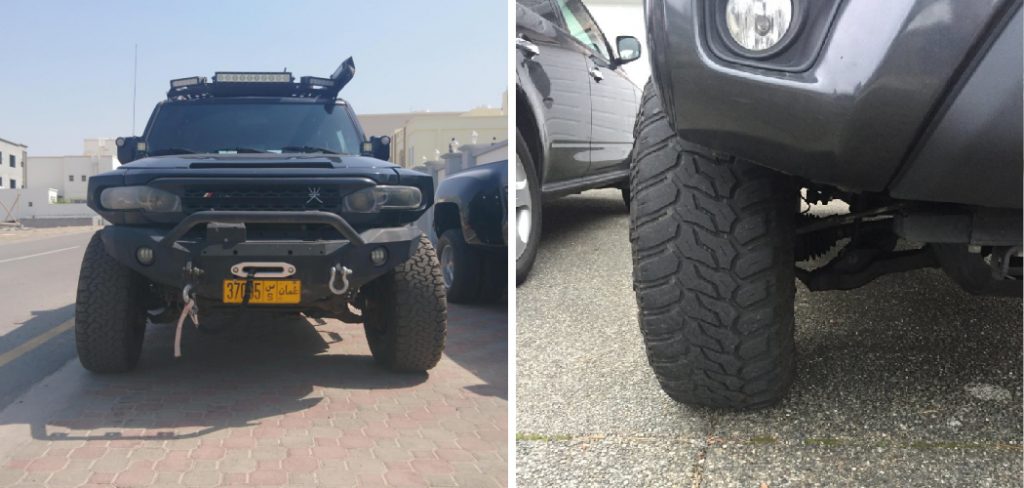
This gives the tires a better contact patch while cornering when you lift a truck, the camber angle changes, which can cause uneven tire wear. This post will show you how to fix camber on a lifted truck. We’ll also explain how camber affects your truck and why it’s important to fix it. Read on to learn more.
Summary: Installing wheel spacers, using camber bolts and adjusting the suspension links are all methods of how to fix camber on a lifted truck. Additionally, installing a caster/camber kit, adjusting the shock mounts, installing coil springs and adjusting the frame can also help correct camber issues.
What Causes Camber Angle Change on a Lifted Truck?
Several factors can cause the camber angle to change on a lifted truck. The most common cause is the change in suspension geometry that occurs when you lift the truck. This can be due to several factors, including changes in the suspension links, shock mounts, or coil springs. Sometimes, the frame may also be tweaked during the lifting process. All of these factors can change the camber angle and lead to uneven tire wear. Another common cause of camber angle change is the use of aftermarket wheels and tires.
When you change the size of the wheels and tires, it can also affect the camber angle. This is because the larger the wheel and tire, the more they will change the suspension geometry. Another common cause of camber angle change is the use of aftermarket wheels and tires. When you change the size of the wheels and tires, it can also affect the camber angle.
Again, this is because the larger the wheel and tire, the more they will change the suspension geometry. Lastly, driving habits can also cause the camber angle to change. If you often drive on uneven roads or take sharp turns, it can stress the suspension and cause the camber angle to change.
Why Is It Important to Fix Camber on a Lifted Truck?
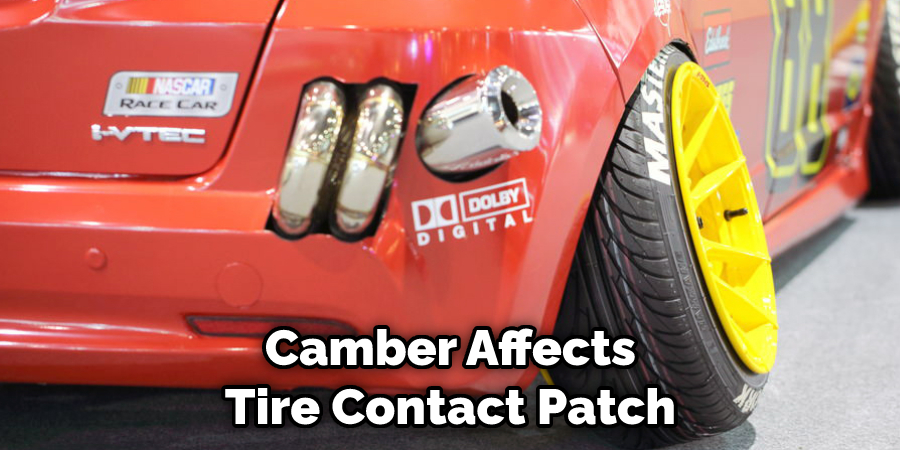
Camber is important because it affects the tire contact patch. The contact patch is the tire area that is in contact with the ground. When the camber angle is off, it can cause the tire contact patch to be uneven, leading to premature tire wear. It can also cause the truck to pull to one side or the other while driving. This is why fixing the camber on a lifted truck is important. If you don’t, it can lead to premature tire wear and handling problems.
Another reason to fix the camber is that it can affect the truck’s alignment. When the camber angle is off, it can cause the truck to be out of alignment. This can lead to even more tire wear and handling problems. So, if you notice that your truck’s camber angle is off, it’s important to take action and fix it.
Some Easy Ways How to Fix Camber on a Lifted Truck
1. Install Wheel Spacers
One of the easiest ways to fix camber on a lifted truck is to install wheel spacers. Wheel spacers are devices that are installed between the wheel and the axle. They act as a spacer, which changes the suspension geometry and corrects the camber angle. Wheel spacers are available in a variety of sizes and thicknesses. You’ll need to choose the right size for your truck.
The most common sizes are 1″, 2″, and 3″. You can also get 4″ and 5″ spacers, but they are less common. Wheel spacers are relatively easy to install. First, you’ll need to remove the wheels. Then, you’ll need to remove the axle nut and washer. Next, you’ll need to place the spacers on the axle and reinstall the washer and nut. Finally, you’ll need to reinstall the wheels. Wheel spacers are a quick and easy way to fix camber on a lifted truck.
2. Use Camber Bolts
Camber bolts are another quick and easy way to fix camber on a lifted truck. Camber bolts are special bolts that have an eccentric washer. This allows you to adjust the camber angle by simply turning the bolt. Camber bolts are relatively easy to install. First, loosen the lug nuts on the wheel.
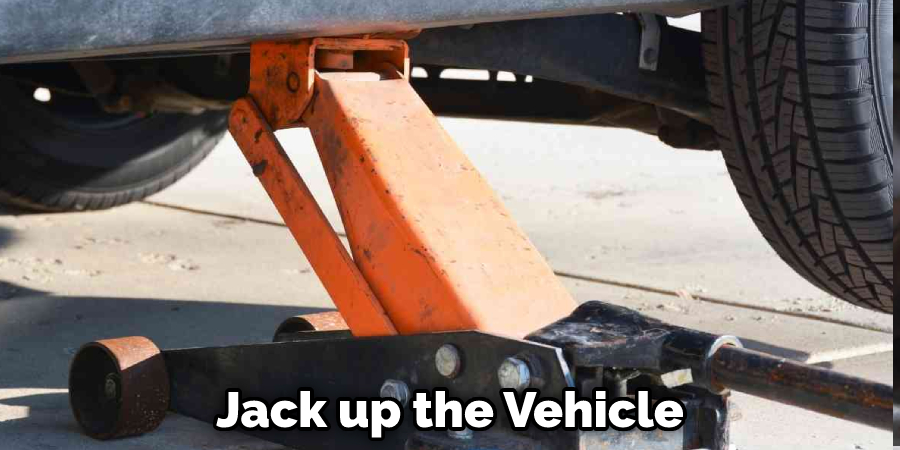
Then, jack up the vehicle and remove the wheel. Next, locate the upper control arm bolt and remove it. Install the camber bolt in its place and tighten it to specifications. Finally, reinstall the wheel and lower the vehicle. Consult your truck’s service manual if you’re unsure where the upper control arm bolt is. Camber bolts are a quick and easy way to fix.
3. Adjust the Suspension Links
If your truck has adjustable suspension links, you can use them to fix the camber angle. Suspension links are the components that connect the control arm to the chassis. By lengthening or shortening the links, you can alter the camber angle. To adjust the links, use a wrench to loosen the nuts that secure them in place. Then, make the necessary adjustments before tightening the nuts back down. You must replace the entire control arm assembly if your truck does not have adjustable suspension links.
4. Install a Caster/Camber Kit
If your truck does not have adjustable suspension links, you can install a caster/camber kit. A caster/camber kit is an aftermarket suspension component that helps you adjust the camber of your truck. It is a simple and effective way to fix the camber on a lifted truck. To install a caster/camber kit, first, you will need to remove the wheel. Once the wheel is removed, locate the caster/camber kit on the suspension. Follow the instructions that come with the kit to install it. Once the kit is installed, you can adjust the camber of your truck.
5. Adjust the Shock Mounts
If your truck has adjustable shock mounts, you can use them to fix the camber. Shock mounts are the devices that connect the shocks to the frame of the vehicle. Adjusting the shock mounts will change the angle of the shocks, which will, in turn, change the camber. To adjust the shock mounts, start by loosening the bolts that hold them in place.
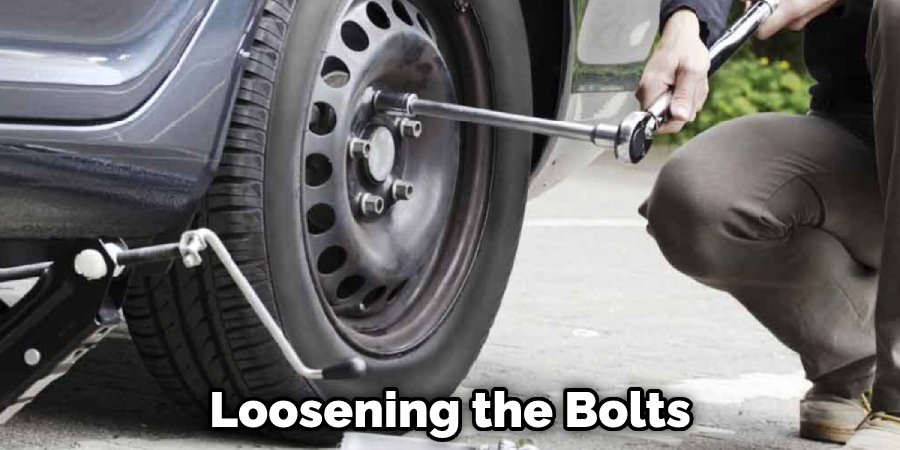
Then, rotate the mounts until the camber is corrected. Once you have the desired camber, tighten the bolts back up. It is important to note that not all trucks have adjustable shock mounts. If your truck does not have adjustable shock mounts, you will need to replace the shocks with those with adjustable mounts.
6. Install Coil Springs
If your truck has coil springs, you can use them to fix the camber. Coil springs are a type of suspension component that helps support the vehicle’s weight. They are located between the frame and the axles. To fix the camber with coil springs, you will need to remove the old springs and install new ones. If you are not sure how to do this, you can consult a mechanic or a how-to guide.
7. Adjust the Frame
If your truck has an adjustable frame, you can use it to fix the camber. Raise or lower the frame until the camber is corrected, then weld the frame in place. You’ll need to weld in a new frame if your truck doesn’t have an adjustable frame. If you’re not comfortable welding, take it to a professional.
You Can Check It Out To Fix Negative Camber on Lifted Truck
How Much Does It Cost to Fix Camber on a Lifted Truck?
The cost of fixing the camber on a lifted truck will vary depending on your method. If you adjust the suspension links, you can expect to pay around $100. If you install a caster/camber kit, you can expect to pay between $200 and $300. And if you adjust the shock mounts, you can expect to pay between $400 and $500. The cost of replacing the coil springs will vary depending on the type of springs you choose. You can expect to pay between $600 and $800 for a set of new coil springs. Finally, if you need to adjust the frame, you can expect to pay between $1,000 and $1,500.
Tips and Warnings on How to Fix Camber on a Lifted Truck:
Tips:
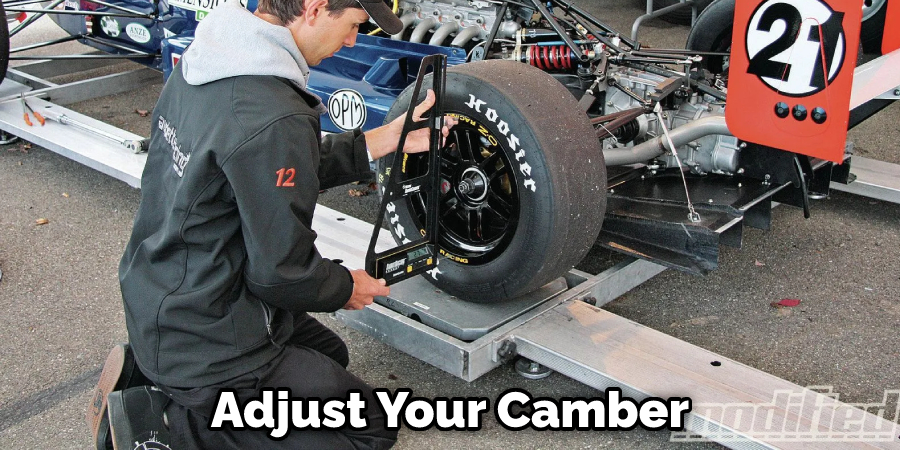
- Check your vehicle’s manual to see the stock camber settings for your specific make and model.
- Use a tape measure to measure the distance between the ground and the center of the wheel on both sides of the vehicle.
- Compare your measurements to the stock settings. If they’re different, you’ll need to adjust your camber.
- Use a camber gauge to measure the angle of your wheels.
- Adjust your camber settings accordingly.
Warnings:
- Do not make drastic camber adjustments.
- Do not drive your vehicle on public roads with excessively negative camber.
- Be sure to have your alignment checked after making any adjustments.
- Do not attempt to adjust your camber if you don’t know what you’re doing. Doing so could result in serious injury or damage to your vehicle.
- If you’re unsure of how to adjust your camber properly, take your vehicle to a professional mechanic or alignment shop.
Frequently Asked Questions
Does a Suspension Lift Affect Camber?
A suspension lift does not affect the camber. Camber is the angle at which a wheel sits in its suspension system and is determined by the geometry of the vehicle and its brakes.
Do You Need an Alignment After Lifting Truck?
Alignment after lifting truck is an important procedure that should always be carried out in order to ensure safe and reliable operation of your truck. Follow these simple steps to ensure proper alignment:
- Check the alignment of your front and rear suspension by performing a forklift test. This will help you identify any irregularities and make necessary adjustments.
- Adjust your front and rear toe-in angles as needed.
- Adjust the camber (curve) of your wheelbase as needed.
- Verify wheel alignment by using a wheel balancer or a straight edge as shown in the picture below:
What Causes Camber Out?
Camber Out is a common problem that can occur in the steering column of a car. It typically occurs when the ball joint on the steering column wears out or becomes loose, which causes the wheel to rotate excessively. This excessive rotation can cause difficulties with turning and handling, as well as decreased fuel efficiency and potential accidents.
In many cases, camber out may be corrected by replacing worn parts of the steering column or by tightening any loose bolts. If these measures do not resolve the issue, then it may be necessary to replace the entire steering column assembly.
Camber Out is an important indicator that should always be checked before making any major repairs to your vehicle, especially if you experience difficulty driving or experiencing mechanical problems. By taking preventative action now, you could avoid more serious issues down the road!
Can Camber Be Adjusted?
While there isn’t a concrete answer, most experts believe that camber can be adjusted to some degree. This is because different drivers will require different amounts of caster adjustment in order to drive comfortably and smoothly. Ultimately, it’s important to experiment with your car for a while before making any permanent adjustments.
Camber is often adjusted by degrees rather than full turns because this allows the tire to move more freely within its suspension range while still providing stability at higher speeds. Additionally, turning too sharply may cause the wheelbase to change excessively which could negatively affect handling and braking performance.
Is Positive or Negative Camber Better?
Positive camber is when the car’s wheelbase (the distance between the front and rear wheels) has more curves in it than negative camber. The main benefit of positive camber is that it allows a vehicle to corner harder and faster due to more grip on the surface that it’s traveling over. This makes for a fun driving experience, but also increases your risk of making mistakes since you’re not as aware of potential obstacles around you.
Negative camber, on the other hand, reduces both grip and traction by angling either or both ends further outward from each other. As a result, this type of suspension system offers less steering response and decreased stability at high speeds.
Conclusion
So there you have it! That’s how to fix camber on a lifted truck. Following the tips and instructions in this article, you can get your truck’s camber back in alignment in no time. We hope this article has been helpful. Thanks for reading!
You May Also Read: How to Adjust Camber Without Camber Bolts
